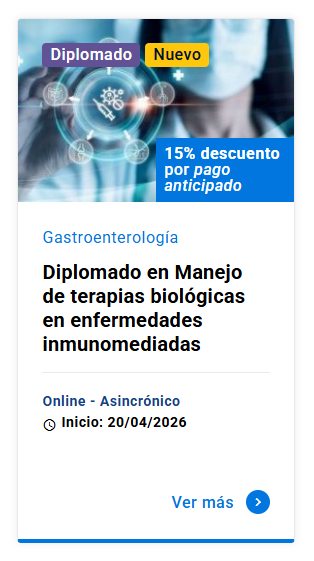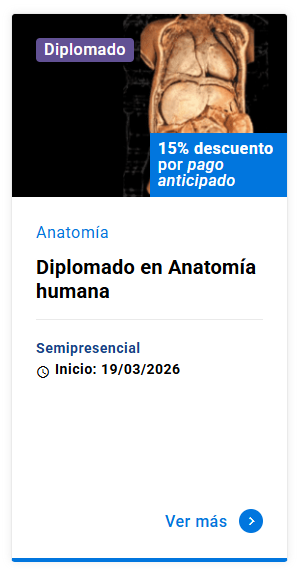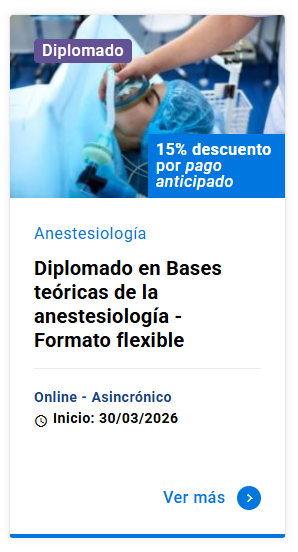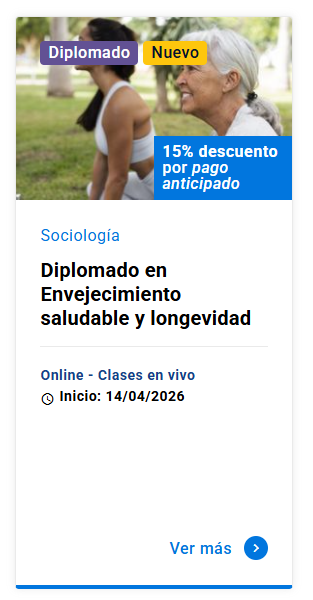Trastorno de alimentación: identificación y primeras intervenciones para los profesionales de salud
DOI:
https://doi.org/10.11565/arsmed.v44i2.1530Palabras clave:
trastornos de alimentación, anorexia, bulimia, primeras intervenciones en trastornos de alimentación, identificación temprana trastornos de alimentación, diagnóstico precoz trastornos de alimentación.Resumen
los trastornos de la alimentación e ingesta (TAI) son un complejo conjunto interdimensional de enfermedades mentales que afectan el rendimiento corporal, mental y social. El núcleo de la enfermedad es el miedo a ganar peso. Las estrategias de control de ingesta varían entre: restricción, selección y purga alimentaria. Afectan diferentes sexos, razas, etnias y edades. Con mayor frecuencia en adolescentes y mujeres jóvenes (9: 1). Presentan alta mortalidad, comorbilidad mental y conflictos familiares asociados.
Método: integrar información disponible y útil según criterio de experto, orientada al manejo clínico de los TAI. Resultado: debido a que los profesionales de salud de diferentes áreas podrían ser el único contacto que el/la paciente busca para aliviar alguna dolencia aparentemente no relacionada con TAI, es necesario lograr identificar y diagnosticar los estadios patológicos e indicar las primeras conductas, así como hacer una referencia exitosa. El retraso en el diagnóstico causa alteraciones severas y crónicas en la fisiología, el comportamiento, la cognición y el funcionamiento psicosocial. Los objetivos de este estudio son: a. Presentar, en forma integrada, la información disponible de modo de facilitar a los profesionales de la salud la detección precoz de los TAI; b. Ofrecer un conjunto de acciones útiles que faciliten el diagnóstico TAI; c. Organizar la comprensión del riesgo TAI en un diagrama que facilite la construcción de la derivación utilizando las dimensiones: cuerpo, mente, relaciones; d. Mostrar las alternativas psicoterapéuticas en uso e. Proveer información para realizar las primeras intervenciones. Conclusión: reconocer tempranamente el cuadro TAI puede detener el curso patológico y los potenciales daños.
Descargas
Citas
Agras WS, Lock J, Brandt H, Bryson SW, Dodge E, Halmi KA, & Woodside B. (2014). Comparison of two-family therapies for adolescent anorexia nervosa: a randomized parallel trial. JAMA psychiatry 71, 1279-1286. DOI: https://doi.org/10.1001/jamapsychiatry.2014.1025
Andolfi M, Angelo C, & García FL. (1989). Tiempo y mito en la psicoterapia familiar. Paidós, B Aires
APA American Psychiatric Association. (2013). Diagnostic and statistical manual of mental disorders (DSM-5®). American Psychiatric Pub. DOI: https://doi.org/10.1176/appi.books.9780890425596
Arcelus J, Mitchell AJ, Wales J & Nielsen S. (2011). Mortality rates in patients with anorexia nervosa and other eating disorders. A meta-analysis of 36 studies. Arch Gen Psychiatry 68, 724–31. DOI: https://doi.org/10.1001/archgenpsychiatry.2011.74
Cardi V, Corfield F, Leppanen J, Rhind C, Deriziotis S, Hadjimichalis A & Treasure J. (2015). Emotional processing, recognition, empathy and evoked facial expression in eating disorders: an experimental study to map deficits in social cognition. PLoS One 10, e0133827. DOI: https://doi.org/10.1371/journal.pone.0133827
Conceição EM, Utzinger LM, & Pisetsky EM. (2015). Eating disorders and problematic eating behaviours before and after bariatric surgery: characterization, assessment and association with treatment outcomes. European Eating Disorders Review 23, 417-425. DOI: https://doi.org/10.1002/erv.2397
Cordella P. (2018) El comer patológico durante el desarrollo Infanto –juvenil: Atracones, Obesidad, Anorexia y Bulimia. En Obesidad, ¿qué podemos hacer? ed Mardones F, pp 171-184. Ediciones UC. (en prensa)
Cordella P & Moore C. (2015). Patrón adaptativo obesogénico cerebral: una propuesta para comprender y evaluar la obesidad en la práctica clínica. Revista chilena de nutrición 42, 60-69. DOI: https://doi.org/10.4067/S0717-75182015000100008
Cordella P. (2016). Anorexia, bulimia y obesidad: Experiencia y reflexión con pacientes y familias. Ediciones UC.
Cordella-Masini, MP, Aedo K, & Ramirez V. (2018). Riesgos asociados a los hijos de mujeres con trastornos alimentarios. ARS MEDICA Revista de Ciencias Médicas 43, 42-49. DOI: https://doi.org/10.11565/arsmed.v43i3.1338
DerMarderosian D, Chapman HA, Tortolani, C, & Willis MD. (2018). Medical Considerations in Children and Adolescents with Eating Disorders. Child and adolescent psychiatric clinics of North America 27, 1-14. DOI: https://doi.org/10.1016/j.chc.2017.08.002
Easter A, Howe LD, Tilling K, Schmidt U, Treasure J & Micali N. (2014). Growth trajectories in the children of mothers with eating disorders: a longitudinal study. BMJ Open 27, 4 - e004453. DOI: https://doi.org/10.1136/bmjopen-2013-004453
Elliott R. (2010). Psychotherapy change process research: Realizing the promise. Psychotherapy research 20, 123-135. DOI: https://doi.org/10.1080/10503300903470743
Fichter MM, Quadflieg N & Hedlund S. (2006). Twelveâ€year course and outcome predictors of anorexia nervosa. International Journal of Eating Disorders 39, 87-100. DOI: https://doi.org/10.1002/eat.20215
Golden NH, Katzman DK, Sawyer SM, Ornstein RM, Rome ES, Garber AK, Kohn M & Kreipe RE (2015).Position paper of the society for adolescent health and medicine: medical management of restrictive eating disorders in adolescents and young adults references. Journal of Adolescent Health 56, 121-125. DOI: https://doi.org/10.1016/j.jadohealth.2014.11.020
Guarda AS, Schreyer CC, Boersma GJ, Tamashiro KL & Moran TH. (2015). Anorexia nervosa as a motivated behavior: Relevance of anxiety, stress, fear and learning. Physiology & behavior 152, 466-472. DOI: https://doi.org/10.1016/j.physbeh.2015.04.007
Keel PK, Dorer D, Franko DL, Jackson SC & Herzog DB. (2005). Postremission predictors of relapse in women with eating disorders. American Journal of Psychiatry 162, 2263-2268. DOI: https://doi.org/10.1176/appi.ajp.162.12.2263
Lasègue C. (1873 a). De l'anorexie hystérique. Archives Générales de Médecine 1, 385–403.
Lock J, Le Grange D, Agras W, Moye A, Bryson S., & Jo B. (2010). Randomized clinical trial comparing family-based treatment with adolescent-focused individual therapy for adolescents with anorexia nervosa. Archives of general psychiatry 67, 1025-1032. DOI: https://doi.org/10.1001/archgenpsychiatry.2010.128
Mander J, Teufel M, Keifenheim K, Zipfel S & Giel KE. (2013) Stages of change, treatment outcome and therapeutic alliance in adult inpatients with chronic anorexia nervosa. BMC Psychiatry 13, 111. DOI: https://doi.org/10.1186/1471-244X-13-111
Mangweth-Matzek B, Hoek H W, & Pope Jr H G. (2014). Pathological eating and body dissatisfaction in middle-aged and older women. Current opinion in psychiatry 27, 431-435. DOI: https://doi.org/10.1097/YCO.0000000000000102
Ministerio de Salud de Chile. (2016). Norma para la evaluación nutricional de niños, niñas y adolescentes de 5 años a 19 años de edad. Accedido en https://www.previenesalud.cl/assets/PDF/normas/2016-norma-evaluacion-nutricional.pdf el 07 de septiembre 2018.
Murthy L, Richardson J, Rowark S, & Wasielewska, A. (2017). NICE public health guidance update. Journal of Public Health, 1-3. DOI: https://doi.org/10.1093/pubmed/fdx095
Nazar BP, Gregor LK, Albano G, Marchica A, Coco GL, Cardi V & Treasure J. (2017). Early response to treatment in eating disorders: A systematic review and a diagnostic test accuracy metaâ€analysis. European Eating Disorders Review 25, 67-79. DOI: https://doi.org/10.1002/erv.2495
Papadopoulos FC, Karamanis, Brandt L, Ekbom A & Ekselius L. (2013). Childbearing and mortality among women with anorexia nervosa. International Journal of Eating Disorders 46, 164-170. DOI: https://doi.org/10.1002/eat.22051
Phillipou A, Rossell SL & Castle DJ. (2014). The neurobiology of anorexia nervosa: a systematic review. Australian & New Zealand Journal of Psychiatry 48, 128-152. DOI: https://doi.org/10.1177/0004867413509693
Rueda G E, Díaz L A, Campo, Barros J A, Avila G C, Oróstegui L T & del Pilar Cadena, L. (2005). Validación de la encuesta SCOFF para tamizaje de trastornos de la conducta alimentaria en mujeres universitarias. Biomédica 25, 196-202. DOI: https://doi.org/10.7705/biomedica.v25i2.1342
Schmidt U, Magill N, Renwick B, Keyes A, Kenyon M, Dejong H. & Watson, C. (2015). The Maudsley Outpatient Study of Treatments for Anorexia Nervosa and Related Conditions (MOSAIC): Comparison of the Maudsley Model of Anorexia Nervosa Treatment for Adults (MANTRA) with specialist supportive clinical management (SSCM) in outpatients with broadly defined anorexia nervosa: A randomized controlled trial. Journal of consulting and clinical psychology 83, 796 DOI: https://doi.org/10.1037/ccp0000019
Selvini Palazzoli M, Cirillo S, Selvini M, & Sorrentino AM. (1998). Ragazze anoressiche e bulimiche. La terapia familiare, Cortina, Milano, 1.
Silva J, Behar R, Cordella P, Ortiz M, Jaramillo K, Alvarado R & Jorquera MJ. (2012). Validation of the Spanish version of the Eating Disorders Diagnostic Scale. Revista medica de Chile 140, 1562-1570. DOI: https://doi.org/10.4067/S0034-98872012001200007
Steinhausen HC. (2009). Outcome of eating disorders. Child and Adolescent Psychiatric Clinics of North America 18, 225-242. DOI: https://doi.org/10.1016/j.chc.2008.07.013
Stice E, Marti C N, & Rohde P. (2013). Prevalence, incidence, impairment, and course of the proposed DSM-5 eating disorder diagnoses in an 8-year prospective community study of young women. Journal of abnormal psychology 122, 445-448. DOI: https://doi.org/10.1037/a0030679
Swanson S. A, Crow S J, Le Grange D, Swendsen J, & Merikangas KR. (2011). Prevalence and correlates of eating disorders in adolescents: Results from the national comorbidity survey replication adolescent supplement. Archives of general psychiatry 68, 714-723 DOI: https://doi.org/10.1001/archgenpsychiatry.2011.22
Tasca G A. (2018). Attachment and Eating Disorders: A Research Update. Current opinion in psychology DOI: https://doi.org/10.1016/j.copsyc.2018.03.003
Tchanturia K, Lounes N, & Holttum S. (2014). Cognitive remediation in anorexia nervosa and related conditions: a systematic review. European Eating Disorders Review 22, 454-462. DOI: https://doi.org/10.1002/erv.2326
Treasure J, Cardi V, Leppanen., & Turton R. (2015). New treatment approaches for severe and enduring eating disorders. Physiology & behavior 152, 456-465. DOI: https://doi.org/10.1016/j.physbeh.2015.06.007
Turton R, Bruidegom K, Cardi V, Hirsch C R, & Treasure J. (2016). Novel methods to help develop healthier eating habits for eating and weight disorders: a systematic review and meta-analysis. Neuroscience & Biobehavioral Reviews 61, 132-155. DOI: https://doi.org/10.1016/j.neubiorev.2015.12.008
Vall E, & Wade T D. (2015). Predictors of treatment outcome in individuals with eating disorders: A systematic review and metaâ€analysis. International Journal of Eating Disorders 48, 946-971. DOI: https://doi.org/10.1002/eat.22411
Wentz E, Gillberg I C, Anckarsäter H, Gillberg C, & Råstam M. (2009). Adolescent-onset anorexia nervosa: 18-year outcome. The British Journal of Psychiatry 194, 168-174. DOI: https://doi.org/10.1192/bjp.bp.107.048686
Zipfel S, Lowe B, Reas DL, Deter HC, Herzog W. Long-term prognosis in anorexia nervosa: lessons from a 21-year follow-up study. Lancet 2000; 355, 721–22. DOI: https://doi.org/10.1016/S0140-6736(99)05363-5
Descargas
Publicado
Cómo citar
Licencia
Derechos de autor 2019 ARS MEDICA Revista de Ciencias Médicas

Esta obra está bajo una licencia internacional Creative Commons Atribución-NoComercial-SinDerivadas 4.0.
Los autores/as conservan sus derechos de autor y garantizan a la revista el derecho de primera publicación de su obra, la que estará simultáneamente sujeta a la Licencia CC BY-SA 4.0 (Ver declaración de Acceso Abierto).







